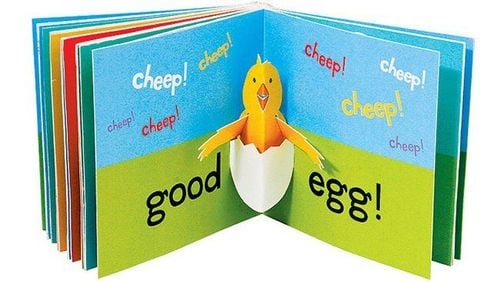This is an automatically translated article.
The article was written by Speech therapist Nguyen Thi Yen - Unit of Regenerative Medicine Clinic and Educational PsychologyFor children of preschool age, reading books plays an extremely important role in the development of children's language, emotions, and social skills. Reading helps children familiarize themselves with the different sounds of language.
1. Benefits of reading for preschool children
Children learn a lot of vocabulary and grammar. Children familiarize themselves with letters. This is the premise to build early literacy skills for children. Children have fun and love reading. Children concentrate, listen and understand better. Helps stimulate children's imagination. Reading helps stimulate children's curiosity, curiosity, and curiosity: Children understand the world around them and learn to respect the differences of others Helps develop social skills and skills Managing children's emotions: Children build strong relationships with their caregivers.
2. Read books “with your child” instead of reading “to your child”

Tạo thói quen giúp trẻ yêu thích việc đọc sách
First, look at the book, read aloud the name of the story, the author's name, and look at the illustrations with your child. At this time, you can ask a few questions to stimulate curiosity, elicit ideas and encourage children to use language to answer such as:
Who do you think is in this story This story is about What do you think will happen to these characters. After helping your child begin to visualize the story, “invite” your child to participate by turning the pages of the book.
Read a book with your child
Make the story interesting and interesting by:
Change reading speed, intonation, volume of voice. With each different character, you can completely change the voice and expression to turn the "hearing" into the "experience", "feel" of the child's story. Encourage children to participate in the story by directing them to point to pictures or words from the book. Wait and let your child turn the pages. Before your child turns to a new page, you can ask “what do you think will happen next”... to stimulate the child's imagination. With each page of the book, you can ask the child: “what do you see”, “who has the shadow”, “who do you think this tail belongs to”, etc. If the child pays special attention to a certain page of the book. , you can completely stop, describe all the details, pictures, even create a new story from that page. However, make sure the child becomes “a part” of that new story. You can ask your child to add words in previously read stories. Try pausing reading and letting your child complete the sentences for you. You should start with interesting, repetitive, actionable vocabulary words. For example, you say "it's raining" and wait for your child to say "boom",... This makes it easier for the child to succeed with the "fill in the word" task. Later, when the child is more familiar with the game, you can increase the difficulty by letting the child read part or whole sentence of the story. You can also ask children questions that help them relate outside the story such as: “if you were me, what would you do”; “Who do you think this character looks like”; “If your child encounters a crying child, what will he do”;... Watch the story before reading it with your child, make sure you understand the content and understand the picture of the story. You can have some age- and comprehension-appropriate questions ready to ask while reading. Write the question on a sticky note and stick it on the page of the book you want to ask your child. It will be a great reminder tool to help you not forget what you have prepared before reading the book. This not only helps prolong the interaction between you and your child, but also makes reading more effective and quality. Read with your child interesting words or phrases that are repeated over and over in the story. You can act on those words and work with your child. For example, you read “rainfalls” and clap your hands and say the word “pop.” For children who love letters, vocabulary
Encourage children to look at letters and words and show them the difference between letters. For example, lowercase and uppercase letters,... Introduce and show your child the punctuation marks and explain what they mean. For example: “This is a question mark. When your child sees this mark, it means someone is asking the question “....” When you see words in big, bold print, show your child these words and explain why they are there. such change. For example: “I see the word HU HU written this big. I guess the baby is crying very loudly. ” Ask more questions about the names of the letters. Play a game of "find letters" with your child, especially the letters in your child's name and yours. Suggest activities related to reading
You can discuss and create stories based on existing stories with your child. Draw diagrams to find treasure or ways to rescue the characters in the story,... Guide your child to choose a story topic and discuss, write, and draw together to build a story. exclusively for children. If your child can't read yet, encourage him to look at the pictures and tell the story on his own. Playing the characters in the story is a good idea to help children really experience the story, and at the same time strengthen the bond between the child and you. To read with your child effectively, you should:
Create a habit of reading and try to maintain it every day. Create a comfortable space for your child and friends to read together. Turn off the TV, phone, close the door to reduce noise. This helps your child focus more while reading. Hold your baby, sit across from him, or put him on your lap so he can see the book and see the amusing expressions on your face at the same time. Follow your child's interests and concerns. Don't worry and try to force your child to finish a book when he shows signs of boredom (e.g. look away, stand up,...) Offer options and let your child find the book he or she wants. read. Children may enjoy reading the same book or page over and over. It doesn't matter, your child will soon find that other books or other pages are also very interesting. Repeating short sentences or interesting sounds in the story. For example: “uproot the radish, spit it up”,...
3. Some Kinds of Books Your Child May Like

Những cuốn sách có nhân vật hoạt hình ngộ nghĩnh sẽ thu hút bé
Books have bright, vivid, funny colors. Short stories of 4-10 pages, with few and simple words. Types of interactive books, flip books, moving books. Books on topics: animals, transportation, music, letters, numbers,... Books on skills or recognition, body care. >>> Young children love books that explain "why" and activities around
Please dial HOTLINE for more information or register for an appointment HERE. Download MyVinmec app to make appointments faster and to manage your bookings easily.
Article referenced source: raisingchildren.net.au












